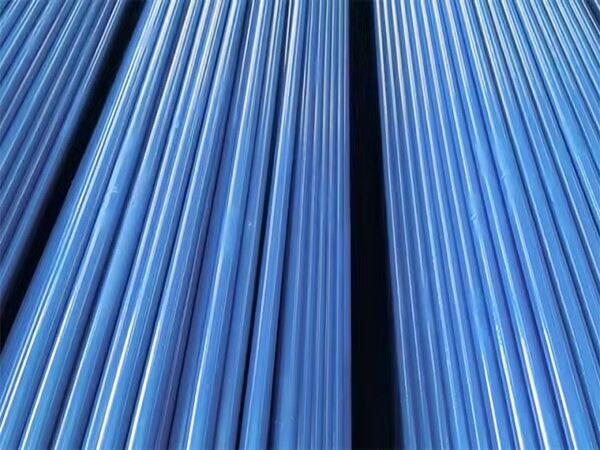The connection mode of seamless pipe
As a kind of high-strength, pressure-resistant and corrosion-resistant pipe,
seamless pipe is widely used in oil, natural gas, chemical industry, boiler, automobile, construction and other fields. In the process of use, the choice of seamless pipe connection is very important, which directly affects the safety, sealing and operating efficiency of the system.

There are many ways to connect seamless tubes, but generally speaking, there are two main types: one is a detachable connection, and the other is a non-detachable connection. A detachable connection means that it can be removed after installation. The non-detachable connection is the permanent connection of two seamless steel pipes. The following are several common connection methods and their characteristics for seamless pipes:
1. Weld the connection
A welded connection is a representative of a non-removable connection, which is a way of joining seamless tubes together by means of thermal melting. Suitable for high temperature, high pressure pipes, such as boiler pipes, steam pipes, etc.
The welded connection has the characteristics of good sealing, no bulge at the connection, smooth inner wall, small fluid resistance, and can withstand high temperature and high pressure. However, this connection has higher requirements for the welding process and requires skilled technicians, and the seamless pipe connected by this connection can not be disassembled, and if there is a welding error, the entire seamless pipe may be scrapped.
2. Threaded connection
The threaded connection is a detachable connection, which is connected tightly with the matching threaded joint by machining the thread at the bottom of the pipe. It is often used in low pressure, small diameter pipe systems, such as household water supply and heating pipes.
The threaded connection is removable and easy to install without special equipment, which is convenient for later maintenance and replacement. The disadvantage is that the tightness is poor, and it needs to be used with sealing materials. Not suitable for large diameter and high pressure pipes.
3. Flange connection
Flange connection is to connect two steel pipes together through flanges and bolts, which is a detachable connection. Widely used in petrochemical industry, natural gas transmission and industrial pipelines.
Flange connection has good sealing performance, easy to disassemble and repair characteristics, very suitable for high temperature and high pressure media. However, its installation is complex, requiring accurate alignment of the flange, the cost is high, and the flange increases the weight and space.
4. Socket connection
Socket connections are made by inserting one pipe into another pipe with a socket and securing it with a sealing material such as a rubber ring or welding. It is generally used for urban water supply, drainage and some small industrial pipeline systems.
Socket connection has the characteristics of quick installation, high connection strength, good sealing, suitable for small diameter pipe. Due to its limited nozzle, it is not suitable for large diameter pipelines, nor is it suitable for high temperature and high pressure environments.
5. Clamp connection
The clamp connection is made by clamping the seamless pipe interface with a special clamp to achieve fast connection. Clamp connection is mainly used for low pressure fluid transport systems, such as fire pipes, water supply pipes.
The clamp connection has the characteristics of convenient installation, easy disassembly and easy maintenance, and does not require special tools to connect. The disadvantage is that the pipe surface finish requirements are high, the applicable pressure is limited, and it is not suitable for high-pressure pipelines.
6. Glue connection
Adhesive connection is the use of special pipe glue, the pipe interface is firmly bonded together. Suitable for low pressure, small diameter plastic seamless pipe or composite pipe.
The adhesive connection is not suitable for high temperature and high pressure media because of the particularity of its material. Long-term use of adhesive layer may age, affect the sealing performance.
7. Expansion connection
The flaring connection is a conical interface formed at the end of the pipe through the flaring tool, and then it is tightened with nuts or pressure rings. Mainly used for hydraulic system, refrigeration system of small pipeline.
Flaring connection is suitable for some special materials (such as copper pipe, stainless steel pipe), this connection has a good sealing effect, suitable for medium and low pressure pipes. Relatively, this process has high requirements, requires special equipment, and is not suitable for large diameter steel pipes.
Conclusion
There are a variety of connection methods for seamless pipes, and the appropriate connection method should be selected according to the use environment, working pressure, medium characteristics, maintenance needs and other factors. Reasonable selection of the connection method can not only improve the engineering efficiency, but also ensure the safety and reliability of the pipeline system.
